1. The Boston Irish Famine Memorial – Boston, Massachusetts
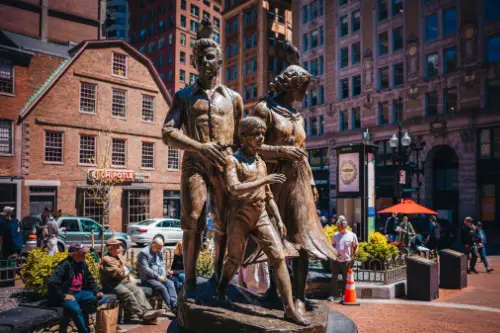
This monument tries to honor the Irish who suffered during the Great Famine, but its execution leaves a lot to be desired, according to Bill O’Donnell from the Boston Irish. One side shows a starving family in rags, while the other depicts a well-fed group living the American dream—it’s a bit on-the-nose. Critics call it cartoonish, melodramatic, and emotionally manipulative. Some locals even say it’s more of a guilt trip than a tribute.
Its overly literal design feels dated and doesn’t really invite reflection or connection. Plus, the site is often cluttered with trash and surrounded by tourists who barely notice it. Even the Boston Globe once described it as “hideous.” When a city’s own newspaper turns on a monument, you know it’s rough.
2. The Captain Cook Statue – Anchorage, Alaska
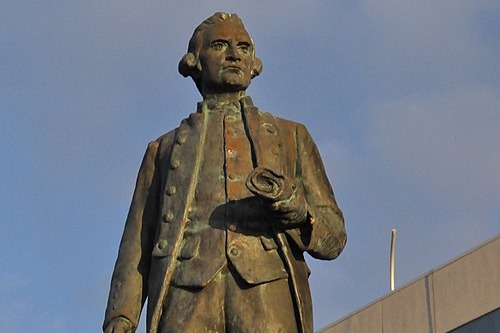
This statue of British explorer Captain James Cook has stirred controversy for years, and not just because it’s aesthetically underwhelming, according to Aubrey Wieber from Anchorage Daily News. Indigenous groups in Alaska have pointed out that Cook’s voyages led to colonization and suffering for Native peoples. In recent years, the statue has been vandalized and there’s ongoing debate about whether it should be removed. It’s a case where the history weighs heavier than the bronze.
Visually, it doesn’t help that the statue looks awkward and rigid, like Cook’s about to topple over mid-speech. It sits atop a bluff overlooking Cook Inlet, giving it a grand stage—but the vibe is more colonial conqueror than honored guest. People say it’s hard to look at without feeling like it glorifies oppression. Even residents admit they walk by it without giving it a second glance.
3. The Quetzalcoatl Statue – San Jose, California

Locals call this one “The Snake” and not in an affectionate way, according to Susan Steade from The Mercury News. It was meant to celebrate Aztec heritage and culture, but most people just see a big, abstract coil of bronze. At 30 feet tall and shaped like a curled-up serpent, it confuses more than it impresses. Some even say it looks like a pile of excrement—seriously, that’s the local nickname.
It cost over half a million dollars and sparked public outrage when it was unveiled in 1994. The artist, Robert Graham, insisted it had symbolic depth, but most viewers feel like they’re missing the point entirely. Art should spark curiosity, but this one mostly triggers eye rolls. It’s been voted one of the ugliest monuments in the state multiple times.
4. The Awakening – National Harbor, Maryland
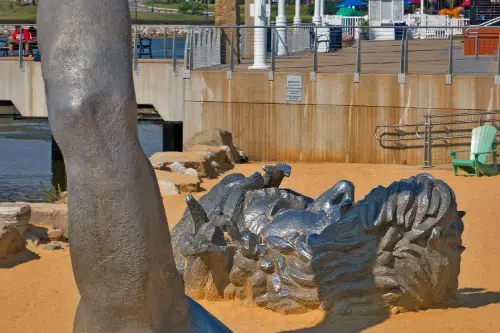
Originally placed in Washington D.C.’s Hains Point, this giant sculpture of a man emerging from the ground was relocated to National Harbor in 2008. It was supposed to feel dramatic and mythic, but now it just looks stranded in a corporate shopping district. The giant limbs stretch out in the sand like he’s trying to escape—but from what? People say it looks less like a rebirth and more like a landscaping accident.
It doesn’t help that its new location feels completely out of sync with its tone. Instead of provoking awe, it kind of creeps people out, especially kids. It’s become a strange photo op rather than a piece of public art with soul. Locals complain it’s lost its original context and now feels like art gone rogue.
5. The Confederate Memorial Carving – Stone Mountain, Georgia

This massive carving of Confederate leaders Jefferson Davis, Robert E. Lee, and Stonewall Jackson looms 400 feet above the ground—and controversy. Critics have long said it glorifies a painful chapter of American history, and it’s hard to ignore that it was commissioned during the Jim Crow era. Some have called it “the Mount Rushmore of the Confederacy,” and not in a complimentary way, according to Kiara Alfonseca from ABC News. It’s even been linked to the early resurgence of the KKK.
Even putting the politics aside, people say the carving itself is cold, uninspired, and weirdly flat. It doesn’t carry the grandeur of its mountain scale—it just feels imposing. The sheer size makes it hard to ignore, but plenty of visitors wish they could. Calls to remove or repurpose it have grown louder, and it’s no wonder why.
6. The Paul Bunyan and Babe Statues – Bemidji, Minnesota

They’re kitschy, iconic, and undeniably odd—but not everyone is charmed. Built in 1937 as roadside attractions, the statues of Paul Bunyan and his blue ox Babe are often described as creepy rather than cute. Paul’s dead-eyed stare and stiff posture give off serious “haunted animatronic” vibes. And Babe? Just a blue cow with an existential crisis.
They’re undeniably part of local culture, but not exactly beloved outside of nostalgia. Critics say they’re more tourist trap than tribute, and they clash with modern sensibilities. There’s also been pushback about glorifying logging and its environmental impact. People stop to take photos, but rarely with admiration.
7. The Rocky Statue – Philadelphia, Pennsylvania
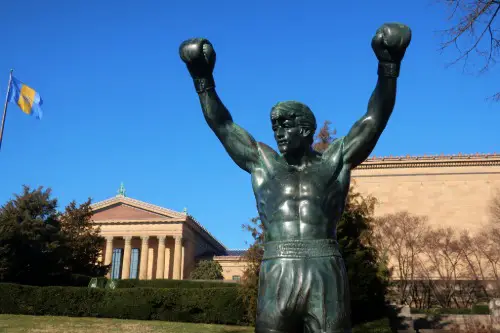
This one’s controversial, because yes—Rocky Balboa is a beloved character. But is a fictional boxer really the best symbol of Philadelphia? Placed near the Philadelphia Museum of Art, the statue has become a selfie hotspot, but art critics have long derided it as pop culture kitsch. Some argue it lowers the tone of an otherwise serious cultural landmark.
Originally, the museum removed it, claiming it wasn’t “art,” but public backlash brought it back. Still, many residents feel it doesn’t belong there, and it’s more of a tourist magnet than meaningful public art. It’s tough to look at without debating its merit, which is kind of exhausting. It’s basically the most divisive thing in Philly after cheesesteak opinions.
8. The Big Chicken – Marietta, Georgia
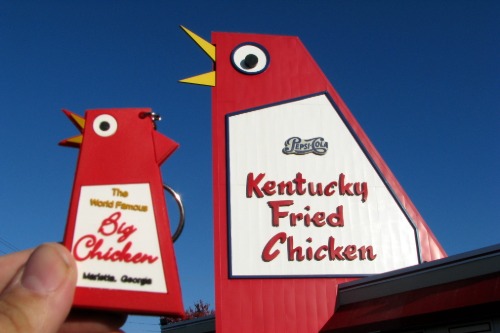
Technically part of a KFC restaurant, this 56-foot-tall chicken with moving eyes and beak is iconic—but not necessarily in a good way. It’s so absurd-looking that pilots actually use it as a navigational landmark. Built in the 1960s, it’s a relic of fast-food advertising culture gone wild. Locals love it ironically, but newcomers often ask, “Why is this a thing?”
The structure was nearly demolished in the 1990s but was saved due to public outcry, which says something about how bad taste can become beloved. That said, the clunky mechanical movements and glaring red beak don’t exactly scream elegance. It’s more eyesore than attraction for many. Still, it clucks on, much to the dismay of design purists.
9. The Fremont Troll – Seattle, Washington
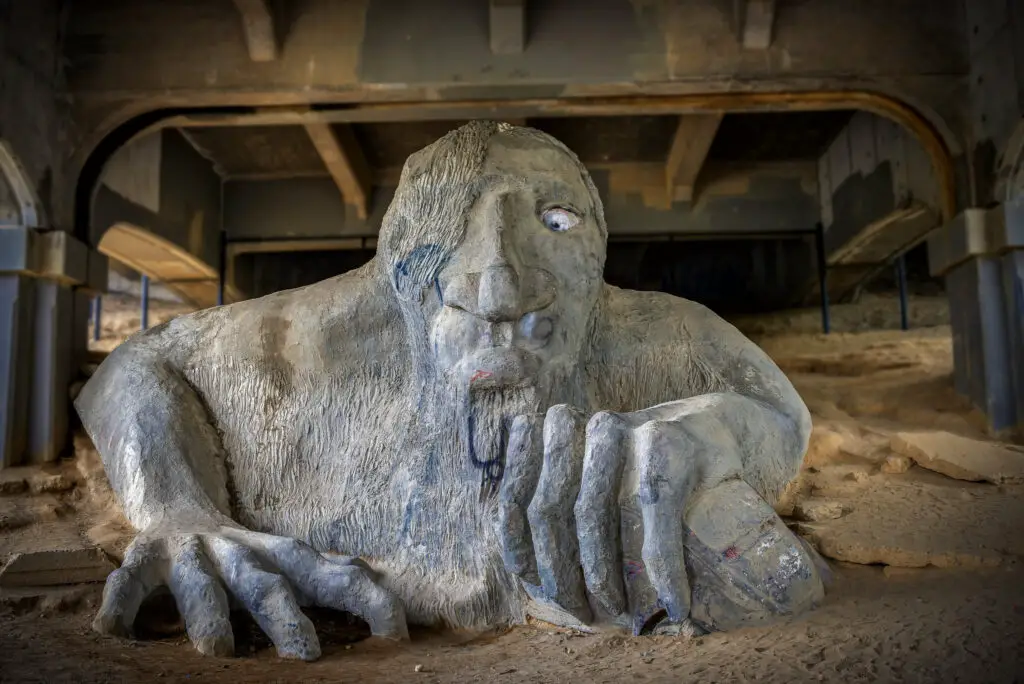
Nestled under a bridge in Seattle’s Fremont neighborhood, this enormous concrete troll is clutching a real Volkswagen Beetle. It’s quirky, sure, but it also creeps out more than a few passersby. Its one visible eye, stringy hair, and gnarled hand look more like a horror movie prop than public art. For some, it’s whimsical; for others, it’s nightmare fuel.
It was created in 1990 as part of a public art competition, meant to “reclaim” the space beneath the bridge. But let’s be honest, it feels more like the bridge is haunted now. Parents sometimes avoid it when walking with little kids. The line between fun and frightening gets blurry fast here.
10. The Cadillac Ranch – Amarillo, Texas
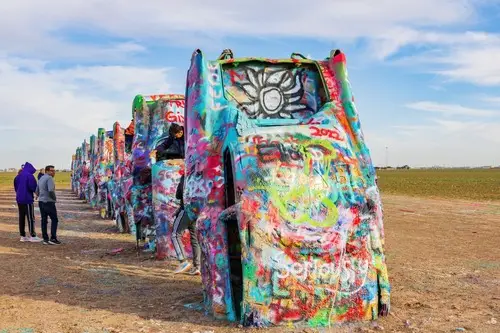
This one’s become a pilgrimage site for road-trippers and graffiti lovers, but not everyone’s impressed. Ten half-buried Cadillacs stand nose-down in the Texas dirt, spray-painted by every visitor who’s passed through since 1974. The original artists said it was about “evolution of the Cadillac tail fin,” but most people just see a junkyard art project. And yeah, it kind of smells like one too.
It’s chaotic, constantly changing, and more Instagram bait than thoughtful installation. Some call it “a triumph of Americana,” but others argue it’s glorified litter. The area is dusty, isolated, and often riddled with trash. For critics, it’s less folk art and more rusting eye-sore.
11. The Aerial Lift Bridge – Duluth, Minnesota

Okay, this one’s an engineering feat, but that doesn’t make it pretty. The bridge raises and lowers like a drawbridge on stilts, and the design is… let’s call it “industrial chic,” minus the chic. Tourists often marvel at its function, but not so much at its form. It’s gray, boxy, and looks like something out of a steampunk Lego set.
Locals admit it’s iconic, but even they joke that it’s not winning any beauty contests. It dominates the Duluth skyline like a robot spine. When the fog rolls in, it looks straight out of a dystopian movie. Functional, yes—attractive, not so much.
12. The Tropicana Las Vegas Clown Sign – Las Vegas, Nevada
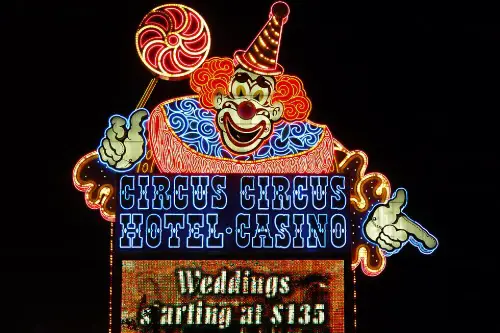
This one is infamous for giving people the heebie-jeebies. Once standing tall outside the old Circus Circus, the giant neon clown sign was the stuff of childhood trauma and adult discomfort. It leered down at passersby with a manic grin, garish colors, and eyes that never blinked. Many people actively avoided that stretch of the Strip because of it.
While the clown has since been removed, its memory still lingers like a Vegas hangover. For years, tourists called it one of the ugliest and most terrifying sights in the city. It was like a fever dream in sign form, and not in a fun, Vegas-y way. If there were a museum of nightmare fuel, this would be front and center.


